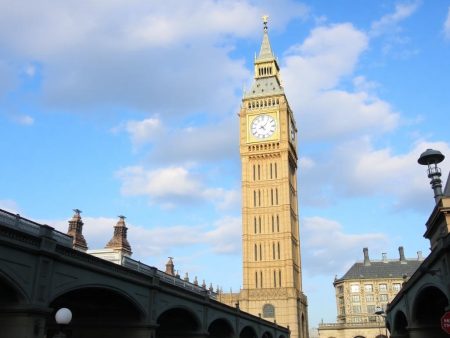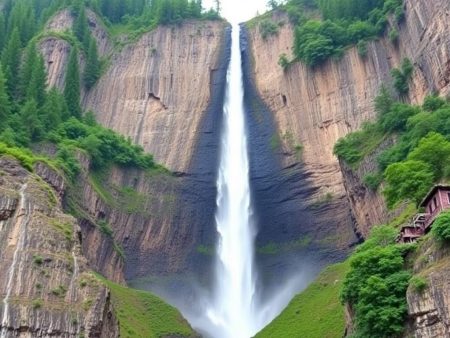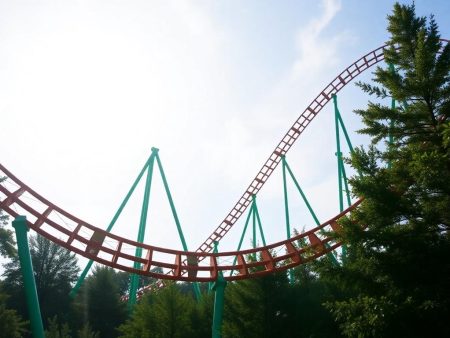Les chevaux ont toujours captivé l'imagination par leur grâce, leur force et leur beauté. Parmi les nombreuses races, certaines se distinguent non seulement par leur élégance, mais aussi par leur taille imposante. Ces gentils géants témoignent de l'incroyable diversité de la nature, laissant les gens émerveillés par leur taille et leur puissance.
Les races de chevaux les plus grandes ne sont pas seulement impressionnantes par leur stature, elles ont également une histoire fascinante.
Découvrez la plus grande race de chevaux : faits étonnants sur les chevaux Shire et autres gentils géants
Les chevaux ont toujours captivé l'imagination par leur grâce, leur force et leur beauté. Parmi les nombreuses races, certaines se distinguent non seulement par leur élégance, mais aussi par leur taille imposante. Ces gentils géants témoignent de l'incroyable diversité de la nature, laissant les gens émerveillés par leur taille et leur puissance.
Convertissez la hauteur des personnes, bâtiments, montagnes et monuments les plus grands en m, pieds et pouces pour comparer
0' 0" est égal à 0,0 cm ou 0,00 m.
Les races de chevaux les plus grandes ne sont pas seulement impressionnantes par leur stature, elles ont également une histoire fascinante et des rôles uniques dans le monde. Qu'il s'agisse de tirer de lourdes charges ou d'être des compagnons adorés, ces animaux majestueux ont gagné leur place sous les projecteurs. Pour quiconque se demande quelle race détient le titre de la plus grande, la réponse est aussi remarquable que les chevaux eux-mêmes.
Quelle est la race de cheval la plus grande ?
Le Shire est la race de chevaux la plus grande, connue pour sa taille exceptionnelle et sa carrure puissante. Les chevaux Shire adultes mesurent souvent entre 17 et 19 mains (68 à 76 pouces au garrot), surpassant la plupart des autres races en stature. Ils sont réputés pour leur silhouette musclée, leur large poitrine et leurs pattes emplumées.
Les chevaux Shire sont originaires d'Angleterre et étaient traditionnellement utilisés pour les travaux de trait lourds, comme le labourage des champs et la traction des charrettes. Leur force et leur stature en ont fait des chevaux fiables pour les tâches agricoles et le transport industriel au XIXe siècle. Les Shires modernes sont couramment vus lors de défilés, de spectacles et d'événements cérémoniels.
La taille de la race continue de captiver les cavaliers et les passionnés de chevaux, ce qui en fait un symbole durable de puissance et d'élégance.
Caractéristiques de la plus grande race de chevaux
Le cheval Shire se distingue par ses traits marquants et son tempérament doux. Sa combinaison unique de taille, de force et de tempérament le définit comme la race de chevaux la plus grande.
Attributs physiques
Les chevaux Shire mesurent généralement entre 17 et 19 mains, certains dépassant 19 mains (76 pouces au garrot). Ils possèdent une carrure musclée, de larges épaules et un cou bien arqué. Leurs jambes sont longues et puissantes, avec des plumes distinctives s'étendant des genoux aux sabots. Les Shires ont souvent des couleurs de robe unies, notamment le noir, le bai, le gris et l'alezan, souvent accompagnées de marques blanches sur les pattes et le visage. Leurs grands sabots assurent la stabilité, supportant leur poids impressionnant, qui peut varier entre 1 800 et 2 400 livres.
Tempérament et comportement
Malgré leur taille imposante, les chevaux Shire sont connus pour leur nature calme et docile. Ils font preuve d'une attitude patiente et douce, ce qui les rend idéaux pour le travail et les loisirs. Ces chevaux répondent bien à l'entraînement et forment des liens forts avec leurs maîtres. Historiquement élevés pour les travaux de trait lourds, ils font preuve d'une éthique de travail constante et d'un comportement calme dans les lieux publics comme les défilés et les spectacles. Leur adaptabilité et leur volonté de travailler en font des compagnons fiables dans divers rôles.
Races populaires connues pour leur taille
Plusieurs races de chevaux sont réputées pour leur taille impressionnante et leur prestance majestueuse. Leur taille, leur force et leur élégance leur ont valu une place de choix dans le monde équin.
Cheval de gros trait
Le Shire est la race de chevaux la plus grande, mesurant souvent entre 17 et 19 mains (68 à 76 pouces) au garrot. Originaire d'Angleterre, cette race était historiquement employée pour les travaux de trait lourds en raison de son immense force et de son endurance. Les Shires possèdent de larges épaules, une carrure musclée et de longues pattes emplumées, ce qui en fait un incontournable des défilés et des cérémonies. Les couleurs de robe courantes comprennent le noir, le gris, le bai et l'alezan, souvent associées à des marques blanches. Malgré leur taille immense, les Shires sont connus pour leur nature douce et calme et leur aptitude exceptionnelle à l'entraînement.
Clydesdale
Le Clydesdale, originaire d'Écosse, est célèbre pour sa taille et son apparence distinctive. Avec une taille moyenne de 16 à 18 mains (64 à 72 pouces) au garrot, ces chevaux sont légèrement plus petits que les Shires mais portent le même héritage de cheval de trait. Les Clydesdales sont reconnaissables à leur superbe plumage blanc sur les pattes, à leurs marques faciales blanches audacieuses et à leur robe bai, noire ou alezan. Réputés pour leur grâce et leur comportement amical, ils figurent souvent dans les publicités, les défilés et les spectacles. Leur combinaison équilibrée de taille et d'élégance met en valeur leur polyvalence.
Percheron
Le Percheron, une race de trait française, allie hauteur et constitution robuste et athlétique. Ces chevaux mesurent souvent entre 15 et 19 mains (60 à 76 pouces) au garrot. Connus pour leur force, les Percherons étaient à l'origine utilisés pour les travaux agricoles et le transport. Bien qu'ils ne soient pas aussi emplumés que les Shires ou les Clydesdales, ils ont des jambes nettes et solides et une silhouette bien musclée. Leurs couleurs de robe varient, le gris et le noir étant les plus courants. Les Percherons sont appréciés pour leur adaptabilité et leur tempérament équilibré, ce qui les rend adaptés à la fois aux disciplines de travail et d'équitation.
Utilisations et rôle de la plus grande race de chevaux
Les races de chevaux de grande taille comme le Shire ont joué un rôle essentiel tout au long de l'histoire et continuent de revêtir une importance dans les temps modernes, mettant en valeur leur polyvalence et leur grâce.
Importance historique
Les chevaux de trait ont joué un rôle essentiel dans la transformation de l'agriculture et des transports. Au Moyen Âge, ils étaient utilisés comme chevaux de guerre en raison de leur capacité à transporter des chevaliers lourdement blindés. Au XVIe siècle, les chevaux de trait sont devenus essentiels dans le travail agricole et le transport industriel, tirant de lourds chariots, des charrues et des machines d'usine. Leur force leur a permis de transporter des marchandises en milieu urbain, ce qui les a rendus indispensables pendant la révolution industrielle.
Rôles d'aujourd'hui
Aujourd'hui, les races de chevaux les plus grandes excellent dans les contextes cérémoniels, récréatifs et compétitifs. Les chevaux Shire mènent souvent des défilés et apparaissent dans des expositions spéciales, symbolisant la force et l'héritage. Ils participent à des compétitions d'équitation et d'attelage, mettant en valeur leur agilité et leur entraînement. Leur nature calme en fait un favori pour la thérapie équine et les programmes éducatifs, tandis que les agriculteurs amateurs les utilisent également pour des pratiques agricoles durables.
Prendre soin de la plus grande race de chevaux
Les chevaux de grande taille comme le Shire nécessitent des soins spécifiques pour maintenir leur santé et leur bien-être. Leur taille ajoute des défis uniques, ce qui rend une alimentation, des exercices et un entraînement appropriés essentiels.
Régime alimentaire et nutrition
Les chevaux de grande taille ont besoin d'une alimentation riche en calories pour soutenir leur taille et leur niveau d'énergie. Ils consomment quotidiennement entre 1,5 et 21 % de leur poids corporel en fourrage, comme du foin ou de l'herbe de pâturage, ce qui rend la qualité de l'alimentation essentielle. Les céréales ou les concentrés peuvent compléter le fourrage, en particulier pendant les périodes de travail intense ou de croissance. Par exemple, un Shire pesant 900 kg peut avoir besoin d'environ 11 à 18 kg de fourrage par jour. Un apport adéquat en vitamines et minéraux est nécessaire pour prévenir les carences ; le calcium et le phosphore sont particulièrement importants pour la santé des os. De l'eau propre et fraîche doit toujours être disponible, car l'hydratation favorise la digestion et le métabolisme.
La surveillance du poids et la consultation d’un nutritionniste équin permettent de garantir que les besoins alimentaires sont satisfaits et d’éviter l’obésité ou la malnutrition.
Exercice et entraînement
Un exercice physique approprié permet aux races de grande taille de rester en forme et de soutenir la santé des articulations et des muscles. Un travail léger au sol, des longes et une sortie régulière permettent un mouvement général, tandis que la traction de charges lourdes ou les disciplines d'équitation avancées améliorent la stimulation physique et mentale. Les séances de travail doivent tenir compte de leur maturité musculo-squelettique plus lente ; le surmenage peut entraîner des tensions ou des blessures, en particulier chez les jeunes chevaux.
L'entraînement des chevaux de grande taille requiert de la patience et de la régularité en raison de leur taille et de leur force. Le renforcement positif renforce la confiance et la coopération, en particulier pour des tâches telles que diriger, charger ou rester calme pour le toilettage. Leur tempérament calme leur permet d'exceller dans des disciplines comme le dressage, l'attelage et les programmes thérapeutiques, à condition que l'entraînement soit adapté à leurs capacités.
Conclusion
Les races de chevaux de grande taille comme le Shire, le Clydesdale et le Percheron incarnent un mélange parfait de force, d'élégance et de tempérament doux. Ces animaux majestueux ont laissé une empreinte durable dans l'histoire et continuent de captiver les cœurs par leur stature impressionnante et leur polyvalence. Qu'ils soient admirés pour leurs contributions historiques ou chéris pour leurs rôles modernes, ils sont de véritables icônes du monde équin. Avec des soins et une attention appropriés, ces gentils géants prospèrent, mettant en valeur leurs qualités remarquables pour les générations à venir.
Questions fréquemment posées
Quelle est la race de cheval la plus grande du monde ?
Le Shire Horse détient le titre de la race de chevaux la plus grande. Ces animaux majestueux mesurent entre 17 et 19 mains (68 à 76 pouces au garrot), certains individus dépassant 19 mains.
D'où viennent les chevaux Shire ?
Les chevaux Shire sont originaires d'Angleterre. Ils étaient autrefois utilisés pour les travaux de trait lourds, comme le labourage des champs et la traction des charrettes, et sont aujourd'hui très appréciés lors des défilés, des spectacles et des cérémonies.
Les chevaux Shire sont-ils bons pour les débutants ?
Oui, les chevaux Shire sont connus pour leur tempérament calme et docile, ce qui les rend adaptés aux débutants lorsqu'ils sont manipulés correctement et avec soin.
Quelles sont les principales caractéristiques physiques des chevaux Shire ?
Les chevaux Shire se caractérisent par leur constitution musclée, leur large poitrine, leur cou bien arqué, leurs longues pattes et leur plumage caractéristique. Ils ont généralement une robe unie comme le noir, le bai, le gris ou l'alezan avec des marques blanches.
En quoi le cheval Shire se compare-t-il au Clydesdale ?
Bien que les deux races soient de grande taille, le Shire est généralement plus grand, mesurant jusqu'à 19 mains, contre 16 à 18 mains pour le Clydesdale. Le Shire a également une carrure plus musclée, tandis que les Clydesdales sont célèbres pour leur plumage blanc éclatant.
Quel type de régime alimentaire les races de chevaux de grande taille ont-elles besoin ?
Les chevaux de grande taille comme les Shires ont besoin d'une alimentation riche en calories. Ils doivent consommer quotidiennement 1,5 à 21 % de leur poids corporel en fourrage, avec des céréales ajoutées pendant les périodes de travail intense ou de croissance.
Les chevaux Shire peuvent-ils être utilisés pour l'équitation ?
Oui, les chevaux Shire peuvent être utilisés pour l'équitation. Malgré leur taille, ils font d'excellents chevaux de selle en raison de leur comportement doux, de leur force et de leur adaptabilité.
Quels sont les rôles historiques des chevaux Shire ?
Historiquement, les chevaux de trait étaient utilisés pour les travaux agricoles et les transports industriels. Ils servaient également de chevaux de guerre au Moyen Âge en raison de leur force et de leur taille.
Quels rôles jouent aujourd'hui les chevaux Shire ?
Aujourd'hui, les chevaux de race Shire excellent dans les parades, les spectacles et les compétitions d'équitation ou d'attelage. Ils sont également utilisés en thérapie équine, dans l'agriculture durable et dans les programmes éducatifs.
De quels soins ont besoin les grandes races de chevaux ?
Les chevaux de grande taille nécessitent des soins attentifs, notamment une alimentation riche en calories, une hydratation adéquate, des exercices réguliers et un entraînement patient. Leur taille nécessite également une surveillance attentive de leur poids et de la santé de leurs articulations.
Pour quoi les chevaux Percherons sont-ils connus ?
Les chevaux percherons, une race de trait française, sont réputés pour leur force, leur adaptabilité et leur polyvalence. Ils mesurent entre 15 et 19 mains et sont très efficaces dans les tâches agricoles et équestres.
Pourquoi les races de chevaux de grande taille sont-elles souvent utilisées en thérapie ?
Les chevaux de grande taille sont doux et calmes, ce qui les rend parfaits pour la thérapie équine. Leur comportement posé contribue à renforcer la confiance et offre un lien thérapeutique aux participants.
Les chevaux Shire ont-ils besoin de techniques d’entraînement particulières ?
Oui, l'entraînement des chevaux Shire nécessite de la patience et un renforcement positif en raison de leur grande taille et de leur force. Un travail au sol léger et une manipulation cohérente favorisent un comportement coopératif.
Qu'est-ce qui rend les chevaux Shire si populaires ?
Les chevaux Shire sont admirés pour leur taille incroyable, leur allure gracieuse, leur musculature et leur tempérament doux. Leur polyvalence dans divers rôles de travail et de loisirs ajoute à leur attrait durable.





